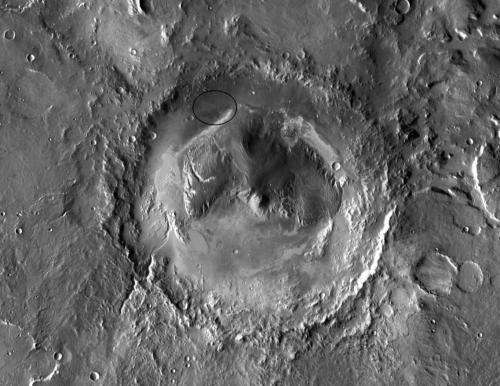Mars scientist explains why NASA chose Gale Crater for new rover

NASA chose Gale Crater as a landing site for its Mars Science Laboratory rover because the giant crater probably had conditions that may have once hosted life. The bottom layers near the crater floor "have minerals in them that form in water," says Philip Christensen, Regents' Professor of Geological Sciences in ASU's School of Earth and Space Exploration.
These minerals include clays, sulfates, and gypsum, he says, and they can give scientists valuable clues about the habitability of early Mars.
Says Christensen, "The current thought is that when this crater first formed some 3.5 to 4 billion years ago, maybe in the bottom of it there was a standing lake, maybe there was groundwater." In any case, he says, there was enough water to make sediments that are full of aqueous minerals. These are good places to look for evidence of Mars' habitability, past or present.
Christensen's comments appear in an interview given to science reporter Pete Spotts for the Christian Science Monitor (Aug. 1, 2012). They provide background on NASA's decision to send the rover to Gale.
Dubbed Curiosity, the rover is scheduled to land on Aug. 5, at 10:31 p.m. Arizona time. The size of a Mini-Cooper car, the one-ton nuclear-powered rover is the biggest, heaviest, and most sophisticated spacecraft ever sent to Mars.
Provided by Arizona State University





















